Metal-on-metal hip replacements such as the DePuy Pinnacle have been in the news* frequently because of hip lawsuits related to the devices’ alleged side effects, such as metal poisoning. The Rottenstein Law Group, a DePuy Pinnacle law firm, notes that pending Pinnacle lawsuits in federal courts are numbering almost 4,000, according to court documents in In re: DePuy Orthopaedics, Inc. Pinnacle Hip Implant Products Liability Litigation – MDL No. 2244. The nationwide lawsuits are managed as a consolidation called “multidistrict litigation” in the U.S. District Court for the Northern District of Texas. That the number of lawsuits has reached nearly 4,000 is not a surprise to Rottenstein Law Group Principal Rochelle Rottenstein. “On a daily basis we receive calls from those who believe their metal-on-metal hip implants such as the DePuy Pinnacle have injured them,” Rottenstein said. “It is only appropriate that the issue be decided in the court system.” Read full story at PRWeb.com: DePuy Pinnacle Lawsuit Update: Rottenstein Law Group Notes That Number of Pending Pinnacle Lawsuits Reaches Nearly 4,000
 The possibility of being permanently confined in a wheelchair is now being faced by a man from Philadelphia, leading news reports say, after he underwent hip revision surgery. The man filed a complaint in the United States District Court of the Eastern District of Pennsylvania in Philadelphia with claims against Johnson & Johnson’s DePuy Orthopaedics. The plaintiff has had a hip revision done to replace the damaged hip implant. However, he was informed thereafter that he might not be able to walk properly and may be confined to a wheelchair for the rest of his life. Now he is claiming that the manufacturer is liable of the damages done by its devices and is raring to receive payment for damages.
Read more at:
Pinnacle Plaintiff Sues DePuy, Faces Confinement to Wheelchair From Injuries
 Study shows that one way to prevent or ease the pain among patients stricken with arthritis is involving oneself in swimming and other aquatic exercises which may allow a wider range of movement that lessens joint pain and stress, according to Vennie Jones, aquatic coordinator for the Baylor Tom Landry Fitness Center in Dallas. Arthritis is an ailment which may cause surgical procedures like metal-on-metal hip replacement which has alarmed several patients for being defective but the British Medical Journal (BMJ) study finds no link between metal hips and cancer. Jones added that walking through water provides 12 times the resistance of air, as long as it serves as a good workout for muscles while eluding the pain that may be caused by impact on dry land. He suggests that some weight-bearing exercise is also necessary to support healthy bone density. Mayo Clinic recommends water workouts for someone who has arthritis or other joint issues, overweight or obese, living a sedentary lifestyle and wants to ease into an exercise program, recovering from an injury or surgery and has his or her doctor's permission, has back problem, has weak leg muscles, older and want to stay in good shape. Arthritis is a joint disorder emphasizing inflammation. A joint is being described as part of the body where two dissimilar bones meet. A joint functions to move the body parts connected by its bones. Arthritis literally means inflammation of one or more joints, MedicineNet.com says. Arthritis is often associated with joint pain. Joint pain is referred to as arthralgia. There are many types of arthritis (over 100 identified, and the number is growing). The types range from those related to wear and tear of cartilage (such as osteoarthritis) to those related with inflammation resulting from an intense immune system (such as rheumatoid arthritis). Together, the many types of arthritis compose the most common chronic sickness in the United States. Arthritis is classified as one of the rheumatic diseases. These are conditions that are different individual illnesses, with differing features, treatments, complications, and prognoses. They are similar in that they have a tendency to affect the joints, muscles, ligaments, cartilage, and tendons, and may have the potential to affect other internal body areas. There are many benefits from participation in a physical water therapy program beyond the fact that the aquatic environment is very enjoyable. It is also called hydrotherapy in which the hydrostatic force of the water is thought to bring about pain relief and may result from taking stress off the affected joint, relaxation or other factors. It is most commonly prescribed for patients with psoriatic arthritis or for rheumatoid arthritis symptom which usually ends up with DePuy Pinnacle. URL References:mayoclinic.com/health/arthritis/AR00009 health-benefit-of-water.com/water-therapy.html#axzz1rnnIuEhQ arthritis.about.com/od/hydrotherapy/Water_Exercises_Arthritis_Hydrotherapy_Swimming_Water_Therapy.htm
 _Patients with rheumatoid arthritis (RA) are prone of dying due to cardiac disease, the Science Daily reports, quoting findings from a recent study. However, "use of robotics in hip replacement surgery lowers margin of error". The risk of cardiovascular disease among patients with RA is caused by disease-related inflammation as well as the risk factors which affect the general population, according to the latest study published in BioMed Central's open access journal Arthritis Research & Therapy. Treatment of arthritis with disease modifying anti-rheumatic drugs (DMARDs) also reduced the patient's risk of heart disease, the Science Daily says. The findings formed part of a five-year-old study conducted among 400 patients with RA. Development of their ailment was measured by chemical markers of soreness and physical appearance. Treatment routines were closely supervised along with risk factors for heart disease, including weight, cholesterol levels, blood pressure, diabetes and smoking, according to the Science Daily. After five years, 97 percent of the patients had been treated with DMARDs, dropping both the chemical markers of inflammation and the physical appearance of their arthritis. Patients were also looking after themselves better. Fewer patients were smokers and their BMI and blood pressure, had reduced (due in part to treatment for high blood pressure). Analysis of patient data revealed that a new cardiovascular event such as heart disease, stroke or DVT could be predicted by intensity of their arthritis and by presence of diabetes, high blood pressure, and the level of triglycerides. Encouragingly treatment with DMARDs decreased the risk but COX-2 inhibitors appeared to predict a new event, Science Daily suggests. Dr Wållberg-Jonsson from University Hospital, Umeå, in Sweden says that the swelling linked with RA raises the patients' risk of heart disease and other cardiovascular events. However it is possible to reduce this risk in a two-pronged attack by treating both the inflammation and traditional risk factors for heart disease, the Science Daily says. RA is considered as a chronic disease, which means a disease that is impossible to cure. The patient may feel warm to the touch and might notice a decreased range of motion, as well as inflammation, swelling and pain in the areas around the affected joints, according to the Arthritis.org website. Although, evidence shows that early diagnosis and aggressive treatment to put the disease into remission is the best means of avoiding joint destruction, organ damage and disability may lead to implantation and later on the filing of a "DePuy Pinnacle Lawsuit". URL REFERENCES:arthritis.org/types-what-is-rheumatoid-arthritis.php web.jbjs.org.uk/content/84-B/7/991.full.pdf
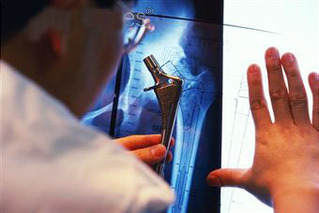 _Those people who were active in sports during their adolescence are at higher risk of developing osteoarthritis from femur damage, medical experts say. This confirms the assumption that partaking in high-intensity sports may had been the most possible reason, according to the Science Daily website. Recently, three U.S. senators presented "a bill which seeks increased monitoring of 510 (k) approved all metal hip implants". For the duration of the childhood and adolescence, spirited sports activities such as basketball, may cause abnormal development of the femur in young athletes. Strenuous physical exertion may result to a deformed hip with reduced rotation and intense pain during movement, the Science Daily says. Hip-straining sports undertakings may explicate why athletes are more likely to get osteoarthritis than those people with a sedentary lifestyle, according to Dr. Klaus Siebenrock, who leads a medical research team from the University of Bern in Switzerland. Siebenrock and colleagues have circulated their work online in Springer's Journal of Clinical Orthopaedics and Related Research. Siebenrock and his colleagues learned that osteoarthritis of the hip was more prevalent in high-level athletes than in those who do not take part in regular sports, reports the Science Daily online resource. Osteoarthritis of the hip was also related to higher-intensity activities and greater physical loading of the hip, Siebenrock was cited. He mentioned that other research findings that male athletes, predominantly those who play soccer and handball, and take part in competitive track and field activities connecting running and jumping, are at higher risk of experiencing early osteoarthritis of the hip, the Science Daily says. Siebenrock and teammates made a comparison of the occurrence of cam-type hip disfigurement among elite athletes during childhood and adolescence and age-matched controls. Cam-type hip misshapenness is a ailment categorized by abnormal bone development on the head of the femur affecting the contact between the femur and the hip socket. They looked at the physical condition and range of movement of 72 hips in 37 male professional basketball players and 76 hips in 38 controlled participants who had not participated in high-level sports. They found basis of disfigurement at the head of the femur, causing anomalous interaction between the femur and the hip socket, in men and adolescents who played in an elite basketball club since they were eight years old. As a consequence, internal hip revolution was abridged and hip mobility were more likely to be painful. These modifications became more distinct when termination of the femoral growth plate for the duration of late adolescence. Totally, the athletes were 10 times more likely to have diminished hip function than the controlled ones. "Our data propose that this hip deformity is in part a developmental deformity, and its manifestation in young adulthood may be initiated by environmental factors such as high-level sports activity during childhood and around the time of closure of the femoral growth plate. Specified the part of the abnormality in deteriorating modifications in the hip, morphological types of the femur resulting from energetic sporting activity are a key factor in the preeminent occurrence of hip osteoarthritis which was seen among athletes," the research resolved. Due to this, more former athletes underwent hip replacement to get rid of the hip pains due to osteoarthritis. Though, instead of getting the ease, hip implants usually may aggravate the patient’s condition which may lead into the filing a DePuy Pinnacle lawsuit. URL REFERENCES:sciencedaily.com/releases/2011/07/110719111107.htm orthopedics.about.com/cs/hipsurgery/a/hiparthritis.htm
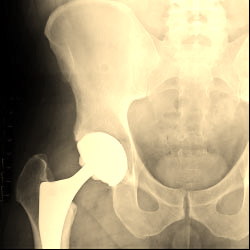 _A study by Cecelia Tiemann shows that more than one million skeletal fractures occur annually in the U.S. About 300,000 of these are hip fractures that may lead to hip pains which may trigger patients to undergo hip implant surgery such as Depuy pinnacle hip implant. Johnson & Johnson’s third quarter earnings report states about up to 560 DePuy pinnacle lawsuits have landed in courts for litigation. Hip implant surgery is defined by MedlinePlus as a hip implant surgery solution for people with severe hip damage. During hip implant surgery, the surgeon pulls out the damaged cartilage and bone from the patient’s hip joint and positions into place new, man-made parts. The surgery takes away the hip pains, revitalizes the patient’s hip joint to work well and increases the capacity to support mobility. An estimated number of hip fractures will continue to rise worldwide from 1.7 million in 1990 to 6.3 million by 2050, according to World Health Organization. Moreover, what most people once thought were the answers to treating and/or preventing osteoporosis have been out in the open. The causes of osteoporosis may develop from previous history of fracture after age 50, decrease in bone mass, post-menopause, small frame and thin, family history of osteoporosis, vitamin D deficiency, low calcium intake, inactive lifestyle, cigarette smoking, use of certain medications, low testosterone in men and overuse of alcohol and caffeine, Tiemann says in her research. To prevent a person from developing osteoporosis, three ways were being highly recommended. First is to maintain balanced meals, including fats, carbohydrates and proteins along with calcium and vitamin D supplementation. Doing exercise comes next in the list which is considered as a very effective way of stopping and even reversing osteoporosis. Third and last is sunlight in safe doses which has also been shown to benefit bone health from the synthesis of vitamin D in the skin. The eHow health website also mentions three effective exercises that can avoid a person from getting osteoporosis these are the strength training which includes extensions, squats and bicep curls. Doing a variation of exercises that may encourage well-balanced muscle development and enhances coordination and balance. Strength training exercises protect the bones against osteoporosis and help maintain a healthy skeletal system and an active lifestyle. Second on the list is the aerobic exercise which is beneficial for the hearth and the over-all fitness. Osteoporosis symptoms can be prevented through this process. Last on the list is the is the flexibility exercises which helps prevent osteoporosis by moving the joints over a chock-full choice of motion. The good news is that with the natural methods of handling bone injury mentioned above, men and women can take more accountability for their bone condition and look headlong to a healthier quality of being. The DePuy Pinnacle Lawsuit can be avoided by patients who are having independent living free from the risk of having an artificial hip joints through a hip implant surgery. URL REFERENCES: nlm.nih.gov/medlineplus/hipreplacement.html ezinearticles.com/?expert=Cecelia_Tiemann ehow.com/way_5616642_exercises-reverse-osteoporosis.html
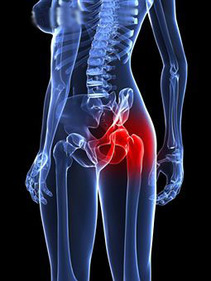 The thigh bone meets the pelvis bone at the hips. The primary function of the hips is to support the weight of the body while standing or moving. This clearly shows how important they are for the body. For this reason, keeping it healthy is part of our duty. Of course, we cannot injuries from happening. Hip replacement surgery is one of the worst thing it could lead to|. Did you know that there are injuries resulting from hip replacement surgery? Due to many causes, these injuries may happen anytime. Injuries resulting from hip replacement are important. However, we do not have control over it because we are non-medical people. Being informed about hip injuries where we can do something in terms of prevention is the best thing we can have. Let’s take a look at common hip injuries that may affect you. Bursitis Bursitis happens when one of the bursa sacs, which protects and cushion the joint, gets inflamed. There are many reasons why this can happen, either from arthritis or from an injury or infection, medical research says. Movements of the joint is being limited by this condition which can result to partial immobility. Early treatment for bursitis involves the use of ice, getting enough rest, and taking in medicine for pain and swelling. Dislocations When there is dislocation, the joint is forced to the end of the bones and is out of position. Falls are the number one reason why this can happen resulting to immobility. It is easy to spot a dislocated joint because it is usually swollen and visibly out of place. Treatment for dislocated joints depends on which joint was affected. Manipulations to reposition your bones, taking in of medicine, and using a splint or sling normally happens. Fractures Fractures happen when bones get broken. Normally, they are caused by injuries resulting from accidents but reasons like osteoporosis can happen which is a condition where weakening of the bones happen. When a fracture is present, out-of-place or misshapen limb or joint, swelling, bruising or bleeding, intense pain, numbness and tingling, and limited mobility or inability to move a limb are likely to happen. Immediate medical attention is how fractures will be treated as a doctor is needed in keeping the bones in place. Aside from fractures, it is evident that common hip injuries can be immediately treated in the comforts of the home. If we do not do what we can to control it, medical operations can be an option. As would people filing a Pinnacle lawsuit do, the public should be informed about operations resulting in injuries and who made the mistake in order to determine who would be answerable. References:nlm.nih.gov/medlineplus/hipinjuriesanddisorders.html nytimes.com/interactive/2011/10/01/business/injury-from-metal-debris-in-artificial-hips.html?ref=health
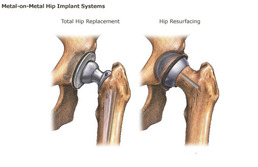 With the breakthroughs in technology, innovations are introduced and that includes metal-on-metal implants. Hip implants are among one of the pioneers in the field that can benefit those with severe hip problems especially the elderly. With hip deterioration, the need to find a prosthetic device for the diseased hip joints that could withstand the wear and tear overtime is on the rise. The goal is to make devices that can be permanent to avoid revision surgery hence saving time, money and effort. However, errors cannot be avoided like the issues the DePuy Pinnacle hip replacement system is facing. In fact, you may want to look at this DePuy Pinnacle hip replacement system report made by the Food and Drug Administration. What is a Metal-on-metal Hip Device?Metal-on-metal Hip Device is among one of the 4 device options currently available in the US for total hip replacement. The device is made up of metal with the ball, stem and shell as parts. Titanium and Cobalt-chrome are two most commonly used metals in metal-on-metal devices. There is no report on which metal is better but cobalt-chrome is known to be used for almost 65 years on orthopaedic devices with less reports of allergies and/or rejections. When it was first introduced in the US in 2002, it was considered as a huge breakthrough. Cobalt-chrome was the metal used in making the firstmetal-on-metal device. Some companies like DePuy designed their metal-on-metal device to have an appeal on the youth and the active because of the durability. Advantages of a Metal-on-metal Hip DeviceMetal-on-metal devices are considered the most durable and can last for a long time if given proper care. Metal-on-metal device has a number of advantages such as the following: - Greater freedom of activity
- Less chances of being dislocated
- Less total material removed (compared to other devices) when there is friction between the ball and socket
- Believed to last a relative longer period of time (at least 15 years) so a revision surgery or another hip replacement won’t be necessary
Concerns on Metal-on-metal DevicesThough it has benefits, the cons were also raised regarding metal-on-metal devices because some can do harm to the individual. Among the concerns raised is the development of metal toxicity as a result of metal particles wearing off due to friction upon movement. Over time, the metal particles can be a possible cause of injury to the bone and the tissues around and this phenomenon is called adverse local tissue reaction (ALTR). This phenomenon may be the cause of loosening of the implants which may need revision surgery. Such reports were made by individuals who filed a DePuy Pinnacle Lawsuit. References:www.accessdata.fda.gov/scripts/cdrh/cfdocs/cfMAUDE/detail.cfm?mdrfoi__id=1933948www.accessdata.fda.gov/scripts/cdrh/cfdocs/cfMAUDE/detail.cfm?mdrfoi__id=1932627www.accessdata.fda.gov/scripts/cdrh/cfdocs/cfMAUDE/detail.cfm?mdrfoi__id=1823546www.fda.gov/MedicalDevices/ProductsandMedicalProcedures/ImplantsandProsthetics/MetalonMetalHipImplants/default.htmwww.hopkinsbayview.org/jointeffort/questionsabouthipreplacement.html
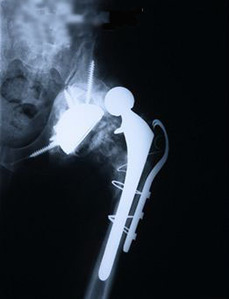 Surgery is an experience that could be traumatic especially if you will be faced with post-surgical complications. In any surgical operation, risks are always present and they can lead to debilitating conditions. Patients with DePuy Pinnacle Hip Replacement implants are included and they had to undergo revision surgeries to correct the complications. DePuy Pinnacle lawsuits that could cost Johnson and Johnson $1 Billion or more were filed by the aggrieved parties. Now, this "hip replacement manufacturer has a new product to offer". Total Hip Replacement is a procedure done to get rid of the damaged hip joints and cartilage by replacing them with prosthetic devices. It has been proven that the risk for complications in hip replacement are relatively low but they do exist and usually occur after the operation when the patient is no longer under close medical attention. Common Complications in Total Hip ReplacementBlood Clots
- Blood clots can be formed and can travel along the bloodstream with dangers of reaching the lungs (pulmonary emboli). Aspirin and other medications with similar mechanism of action is given to the patient for prevention.
Infection- The surgical wound may be an entry for bacteria which could potentially lead to infection of the wound and the joints. Hygiene should be strictly observed when dealing with the wound and it should be checked by the doctor regularly. Although rare in healthy individuals, the most commonly affected are those with underlying diseases such as diabetes, arthritis, chronic liver disease and people who are under corticosteroids. The implants can also be a long-term cause of infection. Antibiotics are usually given to patients especially if they have to undergo procedures like dental works.
Dislocation of the Hip- Since the prosthetic devices appear to be smaller than the normal joints, they can easily dislodge from their original spot when in a certain type of position. Your doctor will instruct you of the things to avoid especially in positioning such as taking your knees to your chest. A body brace may be worn to avoid dislocation.
Bone deposits in Soft Tissues Around the Joints- Heterotopic ossification is the term for this condition. This can limit the person’s range of motion and surgery has to be done if the limitation can be a hindrance to his/her everyday activities.
Loosening of the Artificial Hip Joint Parts- This doesn’t usually show signs unless it is severe and can only be identified with X-ray tests. A revision surgery or another hip replacement will be necessary to repair this condition. This is the most common complaint of individuals who were able to have a DePuy Pinnacle Hip Replacement device as their implant and now filing for a "Pinnacle lawsuit".
 The human hip joint is naturally formed by the top of the thigh bone, called the femur, meeting the socket of the pelvic bone, called the acetabulum. The top of the femur naturally fits into the acetabulum since it is shaped like a ball. The bones are also assisted by the cartilage the hip bone has, the cartilage cushions and protects the bones. The most common reason someone can choose to undergo hip replacement surgery is hip arthritis, this is were the cartilage is worn down to where the bones inside the hip begin to rub against each other, causing a person pain. Hip replacement surgery is normally the next logical step when hip arthritis begins to set in. Hip Replacement surgery is done to over 270,000 people each year, these surgeries are done to relieve pain, return mobility, and remove stiffness from injured hips of these patients. The hip replacement surgery happens in two parts, first the top of the femur or femoral stem is removed and replaced with an artificial ball, afterwards the acetabulum is replaced with an artificial shell where the ball will be placed.These two artificial parts are meant to simulate the body’s natural movement as closely as possible. It is expected as with any surgery that there will be a short recovery time as the body heals and starts to adapt to the new artificial implants. Some bodies however can actually reject the implants and cause more pain to the patient. Implant rejection is not the only side effect one needs to look out for during surgery, other common side effects to surgery include: bone dislocation, leg length discrepancy, failure to improve all pain, bone fracture, change in component position, infection, and even loosening and dislodging of the implant. However, once surgery is done and the body has healed from the procedure there are also other potentially harmful side effect the patient needs to look out for. However, failure of the hip replacement system itself is what the patient needs to be most wary of. A prime example of this is the DePuy Pinnacle hip replacement system, which is a newer hip replacement system by DePuy Orthopaedics Inc., this hip replacement system has a 15% failure rate amongst its recipients, which is unusually high. The high failure rate of the DePuy Pinnacle Hip replacement system has actually caused many of the injured to file a DePuy Pinnacle Lawsuit against DePuy. If you are a recipient of a Pinnacle Hip replacement system and think it is starting to fail you should visit a DePuy Pinnacle Lawyer about your legal options. Many Lawyers will give a free consultation and usually do not charge unless your case receives compensation.
|










 RSS Feed
RSS Feed